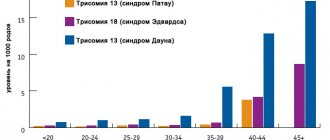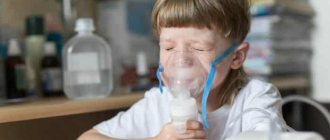Sudden infant death syndrome, or SIDS, is one of the least studied, so it is very difficult to guess who may be insured against it and who may not. Often parents describe their tragedy in the same way: the child went to bed and did not wake up.
Journalist Yulia Dudkina talks about whether it is possible to predict ADHD, how to recover from a tragedy, and what you should never say to a couple who have lost a child. She spoke with both experts and parents who had experienced the death of a newborn.
Alena became pregnant at 16 years old. At that time, she lived in a small town in the Chelyabinsk region and studied at school. “I had a young man whom I started dating when I was fourteen. This was my first love. Everything was very romantic, with flowers and gifts.” Alena says that they didn’t plan a pregnancy, but they didn’t use any contraceptive methods either: then, nine years ago, there were no sex education lessons at their school and they didn’t really know anything about birth control.
“One day I suddenly felt that I was pregnant,” recalls Alena. “Nothing has changed, but I just realized that I feel different.” I went for an ultrasound, and it turned out that I was really going to be a mother.” She and the young man decided together that they would leave the child, get married and try, despite their age, to become good parents. “And then, at the 12th week, during a second ultrasound, it turned out that I was having twins. We were, of course, shocked. Raising two is so hard. But we were still happy that we would have a family.”
When the parents of Alena and her future husband found out that they would have grandchildren, a turmoil arose, everyone began to quarrel among themselves, the girl was persuaded to have an abortion. But she firmly decided that she would give birth. There was a lot of gossip about her at school and in the city. When Alena came to graduation in ninth grade with a rounded belly, many whispered behind her back. “But I didn’t care. My future husband supported me in everything and did not give me offense, he always intervened if someone started saying nasty things.” Over time, the grandparents calmed down, made peace with each other and began to choose diapers and clothes for their grandchildren together.
The twins were born at 38 weeks of pregnancy, slightly premature. But the doctors explained to Alena that this most often happens with twins. “They were two boys - identical twins. It was completely impossible to distinguish them from each other, and in the maternity hospital I was guided by the numbers on the tags and cribs.” The sons were born 20 minutes apart, both healthy and of normal weight.
After being discharged from the maternity hospital, Alena, her husband and children began to live in their own apartment, donated by their parents.
“I was immediately a responsible mother. At the age of 16, many people simply leave their children in the care of their parents, while they themselves go out and go to parties. But I liked taking care of babies. We completed all examinations and tests on time. The boys ate well and began to crawl.”
On December 14, when her sons were already five months old, Alena, as usual, put them to bed and got up at night to feed them. “And then I suddenly woke up at half past five in the morning and remembered that I only got up to see one of my sons, and the second was silent and did not wake up.” Alena became worried. She went to the crib and saw that the second son was already “almost blue” and his eyes were “glassy and not moving.” Alena immediately realized that the child was dead.
Didn't wake up this morning
Sudden infant death syndrome is a diagnosis usually made when an infant dies and an autopsy cannot determine the cause of death.
“These are cases when the pathological examination reveals no infections, no obvious signs of suffocation caused by external factors, no evidence that the child was sick with something,” says neonatologist Elena Yarukova. “For parents, this usually comes as a complete surprise; often they cannot even imagine that something like this could happen.” However, according to the specialist, there are some risk factors: premature birth, low birth weight, multiple pregnancies, previous multiple births, miscarriages or abortions in the mother, pregnancy pathologies or difficulties at birth, infections after birth. There are also external factors, such as second-hand smoke, too-tight swaddling, dangerous sleeping positions, and even stuffiness.
But, as Yarukova explains, these factors are not always decisive. Even if they are all excluded, no one is immune from SIDS. Moreover, as a rule, mothers who had difficulties during pregnancy were warned about such a danger, but those for whom everything went smoothly may not even be aware.
In addition, sometimes risk factors are invisible. “It is believed that one of the main causes of SIDS is the immaturity of the nervous system and cardiovascular system,” explains Yarukova. “The child’s body is still developing, and a failure in the higher nervous system can occur at any stage, especially if this system is underdeveloped for some reason.” Because of such a malfunction, breathing may stop, and then the heart. Most often, parents whose child died due to SIDS tell similar stories: the baby fell asleep and did not wake up in the morning.
Apnea (stopping breathing) can occur in both children and adults, and it is not always dangerous. But normally they should not occur too often and last longer than 20 seconds. Therefore, if a child suddenly stops breathing for a longer period of time, this may signal a problem.
Yarukova explains: There are basic measures that can be taken to reduce the risk of SIDS. The child should not be put to sleep on his stomach, but rather on his back or side. “I usually recommend laying with your head on your side. Then, if the baby burps, the food can come out and there is less risk of choking or suffocation.”
There is no need to clutter the crib with soft toys and pillows: this contributes to the accumulation of dust. It is better to make sure that the child does not overheat, and not to cover his face - according to Yarukova, many mothers do this in winter, when they are going for a walk, because they are afraid that the baby will be cold. The optimal temperature in the room is 20–24 degrees (depending on age) and definitely no more than twenty-five. It is best not to leave the child alone, or watch him using a baby monitor: the device allows you to hear the child breathe, even from another room.
Naturally, it is impossible to monitor the baby 24 hours a day and constantly listen to his breathing, especially since the young mother herself needs to rest and get enough sleep. “Now there are many special devices - breathing monitors. They are placed under the mattress or attached to a diaper. If a child holds their breath for more than 20 seconds, they start beeping in such a way that it is impossible not to hear it.” Any parents can purchase such a sensor, even if their baby is not at risk.
“There are mothers who cannot sleep peacefully because they are so worried about their child. They fall asleep, in their sleep it seems to them that the child has stopped breathing, and they wake up in horror. There is nothing good about this either. It is very important to take care of yourself and remain calm. This is necessary for both the mother and the child. So it’s better to have a sensor.”
Yarukova says that in her department, mothers are always warned about the risks and told about SIDS, but this department receives women who face difficulties even during pregnancy. But in ordinary maternity hospitals they may not warn. As a result, it turns out that those who had a birth without serious complications may be unprepared for such a situation.
What reduces the risk of SIDS
Photo from newstimes.com
Researchers don't know how breastfeeding reduces the risk of sudden death, but statistics suggest just that. Babies who receive breast milk are 50% less likely to develop SIDS. This may be because breast milk improves immunity and reduces the risk of infections, and in addition, skin-to-skin contact with the mother is very important for the development of the baby.
Important warning: Do not drink alcohol while breastfeeding, as this may increase the risk of SIDS.
Another positive factor that has not yet found an explanation is the pacifier. It is recommended to administer it after the child has become accustomed to breastfeeding, that is, at the age of 1 month. Experts recommend giving your baby a pacifier at bedtime, but if he drops it while falling asleep, don't put it back in his mouth.
Tell me how it was
Alena says that after losing one of her sons, she withdrew into herself for a long time. “Even when I read about this diagnosis on the Internet, I still didn’t understand how this could happen. The events couldn’t fit into my head, I didn’t even want to go to the funeral. My parents insisted." She began to fear for her second child. The woman says that at night it was difficult for her to fall asleep, she constantly listened to whether he was breathing. But at the same time, caring for her second son helped Alena. She says she couldn't afford to "give up and despair."
About a year later, problems began in my relationship with my husband. “When everything first happened, we supported each other as best we could. But then it turned out that it was difficult for us to be together after what we had experienced. We started arguing about everything and decided to leave.” Alena moved in with her parents. Sometimes she and her husband did not communicate, sometimes they tried to start a relationship again. “And then he committed suicide. He called me at work and wanted to raise a wonderful son. He said he was leaving. I didn't believe it at first. I hung up, dialed his parents, and asked him to go check. His mother called back and said he was dead.”
Pathogenesis
Although numerous hypotheses have been proposed as the pathophysiological mechanisms responsible for SIDS, none have been proven. The triple risk model, proposed by American experts, suggests that sudden death syndrome is an intersection of factors, including the following:
- a defect in the nervous control of respiratory or cardiac function;
- a critical period in the development of homeostatic control mechanisms (the form of the body’s response to living conditions);
- exogenous external stimuli.
SIDS is rare in infants who have no risk factors or those who have only one factor. In one study, 96.3% of infants who died had 1 to 7 risk factors, with 78.3% having 2 to 7. In another report, 57% of infants had one internal risk factor and 2 external ones.
Death occurs when a child is exposed to stress factors and has insufficiently formed structural and functional defense mechanisms.”
Epidemiological evidence suggests that genetic factors play a role, and many studies have attempted to identify genes associated with SIDS.
I already had a son
Christina (not her real name) gave birth to her first child seven years ago. The pregnancy was planned, the woman immediately registered with the antenatal clinic and took all tests on time. “At about the 12th week, difficulties began. There was a placental abruption, I went to be preserved in one Moscow maternity hospital, then in another.” The birth was also not easy: due to Christina’s health, they decided to have a caesarean section. “They cut me open, and the doctor at some point said: “I thought he was lying differently.” He called the intern and said: “We’ll hold out.” According to her, for the first few seconds the child did not breathe or cry, and he was “barely pumped out.” But the doctors assured Christina that everything was fine with the baby. They showed her the child, she saw that he was breathing and blinking, and she felt calmer.
“But we continued to have many difficulties. When he was discharged from the maternity hospital, his weight was less than normal, then he began to have difficulty swallowing breast milk, the doctors told him to switch to formula. But he regurgitated it, and I had to constantly try other mixtures. This went on for four months, I was terribly exhausted, I was constantly on my nerves.” At this time, according to Christina, she and her husband “communicated poorly,” and there were many conflicts due to stress. As a result, the husband moved and began to live separately.
About a year after the birth of her son, it began to seem to Christina that the situation was getting better. The child gained weight and became stronger, began to learn to walk and talk, and his nutrition improved. Sometimes Christina noticed that her son’s lips and nails were changing in color: they seemed to turn blue. But the doctors said that this was normal, because small children have problems with blood circulation. She was assured that the child was healthy and she had no need to worry.
“I remember one day it was such a good day. My husband and I have made peace. It was summer, we all went for a walk together. The son ate well and was cheerful. I thought: now everything will be fine.” But the next morning, the son suddenly woke up at four in the morning, as Christina says, “squealing.” “He said he had pooped himself, I took him to the bathroom, but it turned out that the diaper was clean.” After this, the child slept until seven in the morning and woke up already cheerful and cheerful. According to Christina, he sat down to play with toys and after a while suddenly lost consciousness.
Etiology
There are several conditions that can lead to SIDS. They usually vary from one child to another.
Brain abnormalities
Some newborns are born with brain problems. They are more likely to experience SIDS than others. Certain parts of the brain control breathing and the ability to awaken from deep sleep. When the brain does not send the signal to perform the appropriate functions, the child dies.
Respiratory infection
When a child suffers from a prolonged cold, it is necessary to consult a doctor immediately.
Many babies die when they suffer from persistent colds, which further contribute to breathing problems.
Low birth weight
Delivering prematurely or having a low baby weight leads to a higher chance of SIDS. When a child is not mature enough, the body has less control over breathing or heart rate.
Hyperthermia (overheating)
Excessively wrapping a baby increases his body temperature. This causes the metabolic rate to increase and the baby may lose control of breathing.
Smoking
If the mother smokes, the chances of the baby dying from SIDS increase.
Treatment of the syndrome
Unfortunately, the treatment of this syndrome still causes difficulties for doctors. Therefore, first of all, specialists start from the main cause of the pathology. The main thing in treating the syndrome is to have time to help the baby in time.
What to do if a newborn becomes ill?
If parents notice that their baby is behaving differently - his breathing is disrupted or his pulse is irregular, it is necessary to immediately call doctors. But time cannot be lost, since every minute is valuable, so adults should try to independently restore the functioning of the cardiac and respiratory system. To do this, you need to give your child a massage:
- Run your fingers along the spine several times;
- Lightly trot the baby in your arms;
- Perform a relaxing massage on your hands, feet and earlobes.
These simple techniques can save a child’s life. But if they do not bring a positive result, it is necessary to proceed with indirect massage of the heart and the entire chest. Movements should be smooth and easy, since the bones of a newborn are still very fragile. The main thing when providing assistance is to put aside panic and think only about a good outcome.
Factors associated with infant sleep management
Having extra objects in a baby's crib or a baby sleeping in a poor position increases the risk of SIDS.
Some sleep patterns that increase the likelihood of SIDS are as follows.
- Sleeping on the stomach - in this position, the baby experiences difficulty breathing.
- Sleep on a soft surface. Sleeping on soft mattresses or with a fluffy comforter pressed against the face can block a baby's airway.
- Covering the baby with heavy blankets and completely covering the face is also dangerous.
- Sleeping with parents. It is better when the baby sleeps in the room with them, but on a separate bed. When a child shares a bed with parents, the space becomes crowded and breathing becomes difficult.
What was the child's position?
What was noted first? Movement of the chest wall and increased breathing in the absence of airflow indicate obstructive apnea. Absence of chest wall movement, respiratory effort, and airflow indicates central apnea.
What is the apnea period (in seconds)? Most healthy children stop breathing momentarily while they are sleeping.
Has the child's skin color changed? The location of cyanosis must be checked; Some healthy children develop a bluish appearance around the mouth when they cry, and acrocyanosis (blue discoloration of the skin of the hands, feet, ears) or discoloration during bowel movements can be misinterpreted as a life-threatening phenomenon.
What was the child's muscle tone (eg, floppy, stiff, or shaky)? Stiffening or convulsive movements accompanied by apnea suggest affective-respiratory attacks (an attack of breath holding).
What was done (eg CPR) and how was it done? The physician should carefully interview the parents or other witnesses about their efforts to resuscitate the child; the lack of need for resuscitation efforts suggests a benign cause, whereas the need for cardiopulmonary resuscitation suggests a more serious cause.
Circumstances surrounding death
Findings consistent with SIDS are as follows:
- we see a healthy baby being fed, put to bed and found dead;
- the quiet death of children;
- resuscitation efforts were unsuccessful;
- The age of the deceased child is younger than 7 months (90% of cases, peak prevalence at 2 - 4 months).
Course of pregnancy, childbirth and infancy.
SVSM-related data obtained
- prenatal care from minimal to maximal;
- Smoking during pregnancy has been reported, as have preterm birth or low birth weight;
- Subtle defects in nutritional and neurological status (eg, hypotension, lethargy, and irritability) may be present.
Other factors include:
- decreased height and weight after birth;
- multiple pregnancy;
- the infant has candidal stomatitis, pneumonia, regurgitation, GER, tachypnea, tachycardia and cyanosis;
- unwanted pregnancy;
- insufficient or no prenatal care;
- late arrival at a medical facility for childbirth or birth outside the hospital;
- the child is not seen by a pediatrician, there is no immunization;
- using alcohol or other drugs during and after pregnancy;
- deviant feeding methods;
- previous unexplained medical disorders (eg, seizures);
- previous episodes of apnea.
Diagnostics
Typically, an infant who dies from SIDS was put to bed after breastfeeding or bottle-feeding. Checks on the baby at variable intervals are unremarkable, but the baby is found dead, usually in the position in which he was placed at bedtime.
Although most babies appear healthy, many parents claim their babies "weren't themselves" in the hours before death. Diarrhea, vomiting and lethargy were noted two weeks before death.
was also observed :
- cyanosis (50 - 60%);
- breathing problems (50%);
- abnormal limb movements (35%).
It is important to determine the exact time sequence of events. The following questions need to be answered
- Did the baby have a foreign body or injury in the respiratory tract?
- Does the infant have a history of apnea?
- How active was the infant before the apnea? Interruption of breathing after a paroxysmal (paroxysmal) cough in a child with an upper respiratory tract infection suggests the presence of whooping cough.
- Time and quantity of last meal. Parents may misinterpret regurgitation after feeding as a life-threatening event.
Help for parents who have lost a child
The death of relatives is a blow for any person. And when it comes to the death of your own child, surviving the tragic event becomes especially difficult. In this case, you only need to understand one thing: SIDS cannot be felt or predicted, which means the parents are not to blame for the death of the baby. You need to learn to live again, seek help from a psychologist. Almost all families subsequently manage to give birth and raise a healthy baby, and sometimes more than one. The main thing is to believe that the best is yet to come.
Autopsy results
At autopsy, the infant usually shows signs of normal hydration and nutrition, indicating appropriate care.
There should be no symptoms of obvious or hidden injury. An extensive examination of the organs usually does not reveal signs of a congenital anomaly or an acquired pathological process. Intrathoracic petechiae are usually present on the surface of the thymus (thymus gland), pleura, and epicardium (outer lining of the heart). Their frequency and severity are independent of whether infants are found face down, up, or sideways in bed.
This finding suggests that centrally mediated airway cessation, rather than airway obstruction, is most likely the cause of SIDS.
Microscopic examination may reveal minor inflammatory changes in the tracheobronchial tree.










